Nickel-Doped Cerium Oxide Nanoparticles: Green Synthesis Using Stevia and Protective Effect against Harmful Ultraviolet Rays
Abstract
1. Introduction
2. Results and Discussion
3. Materials and Methods
3.1. Chemicals
3.2. Nanoparticle Synthesis
3.3. Characterization
3.4. Ultraviolet Protection Level of CeO2 and Ni Doped CeO2 Nanoparticles
4. Conclusions
Author Contributions
Funding
Acknowledgments
Conflicts of Interest
References
- Ferin, J.; Oberdörster, G.; Penney, D.P.; Soderholm, S.C.; Gelein, R.; Piper, H.C. Increased pulmonary toxicity of ultrafine particles I. Particle clearance, translocation, morphology. J. Aerosol Sci. 1990, 21, 381–384. [Google Scholar] [CrossRef]
- Lalitha, A.; Subbaiya, R.; Ponmurugan, P. Green synthesis of silver nanoparticles from leaf extract Azhadirachta indica and to study its anti-bacterial and antioxidant property. Int. J. Curr. Microbiol. App. Sci. 2013, 2, 228–235. [Google Scholar]
- Ramasamy, V.; Mohana, V.; Suresh, G. The synthesis and characterization of undoped and Ni doped CeO2 nanoparticles using sol-gel method. Int. J. Mater. Sci. 2017, 12, 79–88. [Google Scholar]
- Zholobak, N.M.; Ivanov, V.K.; Shcherbakov, A.B.; Shaporev, A.S.; Polezhaeva, O.S.; Baranchikov, A.Y.; Spivak, N.Y.; Tretyakov, Y.D. UV-shielding property, photocatalytic activity and photocytotoxicity of ceria colloid solutions. J. Photochem. Photobiol. B. 2011, 102, 32–38. [Google Scholar] [CrossRef]
- Marionnet, C.; Tricaud, C.; Bernerd, F. Exposure to non-extreme solar UV daylight: Spectral characterization, effects on skin and photoprotection. Int. J. Mol. Sci. 2014, 16, 68–90. [Google Scholar] [CrossRef]
- Berwick, M.; Pestak, C.; Thomas, N. Solar ultraviolet exposure and mortality from skin tumors. In Sunlight, Vitamin D and Skin Cancer; Springer: New York, NY, USA, 2014; pp. 342–358. [Google Scholar]
- Horsham, C.; Auster, J.; Sendall, M.C.; Stoneham, M.; Youl, P.; Crane, P.; Tenkate, T.; Janda, M.; Kimlin, M. Interventions to decrease skin cancer risk in outdoor workers: Update to a 2007 systematic review. BMC Res. Notes 2014, 7, 10. [Google Scholar] [CrossRef]
- Mishra, A.K.; Mishra, A.; Chattopadhyay, P. Herbal cosmeceuticals for photoprotection from ultraviolet B radiation: A review. Trop. J. Pharm. Res. 2011, 10, 351–360. [Google Scholar] [CrossRef]
- Dao, N.N.; Dai Luu, M.; Nguyen, Q.K.; Kim, B.S. UV absorption by cerium oxide nanoparticles/epoxy composite thin films. Adv. Nat. Sci. Nanosci. Nanotechnol. 2011, 2, 045013. [Google Scholar] [CrossRef]
- Hoang, B.T.; Popa, I.U. Innovation in inorganic UV filters in sunscreen. H&PC Today 2014, 9, 35–39. [Google Scholar]
- Iranmanesh, T.; Foroughi, M.M.; Jahani, S.; Zandi, M.S.; Nadiki, H.H. Green and facile microwave solvent-free synthesis of CeO2 nanoparticle-decorated CNTs as a quadruplet electrochemical platform for ultrasensitive and simultaneous detection of ascorbic acid, dopamine, uric acid and acetaminophen. Talanta 2020, 207, 120318. [Google Scholar] [CrossRef]
- Darroudi, M.; Hakimi, M.; Sarani, M.; Kazemi Oskuee, R.; Khorsand Zak, A.; Gholami, L. Facile synthesis, characterization, and evaluation of neurotoxicity effect of cerium oxide nanoparticles. Ceram. Int. 2013, 39, 6917–6921. [Google Scholar] [CrossRef]
- Darroudi, M.; Sarani, M.; Oskuee, R.K.; Khorsand Zak, A.; Hosseini, H.A.; Gholami, L. Green synthesis and evaluation of metabolic activity of starch mediated nanoceria. Ceram. Int. 2014, 40, 2041–2045. [Google Scholar] [CrossRef]
- Miri, A.; Darroudi, H.O.S.; Sarani, M. Biosynthesis of cerium oxide nanoparticles and its cytotoxicity survey against colon cancer cell line. App. Organomet. Chem. 2020, 1, 1–8. [Google Scholar] [CrossRef]
- Miri, A.; Sarani, M.; Hashemzadeh, A.; Mardani, Z.; Darroudi, M. Biosynthesis and cytotoxic activity of lead oxide nanoparticles. Green Chem. Let. Rev. 2018, 11, 567–572. [Google Scholar] [CrossRef]
- Miri, A.; Vahed, H.O.S.; Sarani, M. Biosynthesis of silver nanoparticles and their role in photocatalytic degradation of methylene blue dye. Res. Chem. Intermed. 2019, 9, 164–171. [Google Scholar] [CrossRef]
- Khatami, M.; Alijani, H.Q.; Fakheri, B.; Mobasseri, M.M.; Heydarpour, M.; Farahani, Z.K.; Khan, A.U. Super-Paramagnetic iron oxide nanoparticles (SPIONs): Greener synthesis using Stevia plant and evaluation of its antioxidant properties. J. Clean Prod. 2019, 208, 1171–1177. [Google Scholar] [CrossRef]
- Karthik, K.; Nikolova, M.P.; Phuruangrat, A.; Vijayalakshmi, S.; Mahdizadeh, H.; Radhika, D.; Ojiaku, A.; Rherari, V.; Revathi, V.; Verma, U. Microwave-assisted bioengineered CdS nanoparticles for photocatalytic and biological applications. Catalytica 2019, 1, 40–50. [Google Scholar]
- Karthik, K.; Shashank, M.; Revathi, V.; Tatarchuk, T. Facile microwave-assisted green synthesis of NiO nanoparticles from Andrographis paniculata leaf extract and evaluation of their photocatalytic and anticancer activities. Mol. Cryst. Liq. Cryst. 2019, 673, 70–80. [Google Scholar] [CrossRef]
- Ahmad, A.; Wei, Y.; Syed, F.; Tahir, K.; Rehman, A.U.; Khan, A.; Ullah, S.; Yuan, Q. The effects of bacteria-nanoparticles interface on the antibacterial activity of green synthesized silver nanoparticles. Microb. Pathog. 2017, 102, 133–142. [Google Scholar] [CrossRef]
- Shams, S.; Khan, A.U.; Yuan, Q.; Ahmad, W.; Wei, Y.; Khan, Z.U.H.; Shams, S.; Ahmad, A.; Rahman, A.U.; Ullah, S. Facile and eco-benign synthesis of Au@ Fe2O3 nanocomposite: Efficient photocatalytic, antibacterial and antioxidant agent. J. Photochem. Photobio. B: Bio. 2019, 199, 111632. [Google Scholar] [CrossRef]
- Nasiri, A.; Tamaddon, F.; Mosslemin, M.H.; Amiri-Gharaghani, M.; Asadipour, A. Magnetic nano-biocomposite CuFe2O4@ methylcellulose (MC) prepared as a new nano-photocatalyst for degradation of ciprofloxacin from aqueous solution. Environ. Health Eng. Manag. J. 2019, 6, 41–51. [Google Scholar] [CrossRef]
- Malakootian, M.; Mahdizadeh, H.; Dehdarirad, A.; Amiri-Gharghani, M. Photocatalytic ozonation degradation of ciprofloxacin using ZnO nanoparticles immobilized on the surface of stones. J. Disper. Sci. Technol. 2019, 40, 846–854. [Google Scholar] [CrossRef]
- Dağlıoğlu, Y.; Öztürk, B.Y. A novel intracellular synthesis of silver nanoparticles using Desmodesmus sp. (Scenedesmaceae): Different methods of pigment change. Rend. Lincei. Sci. Fis. Nat. 2019, 30, 611–621. [Google Scholar] [CrossRef]
- Minhas, F.T.; Arslan, G.; Gubbuk, I.H.; Akkoz, C.; Ozturk, B.Y.; Asıkkutlu, B.; Arslan, B.; Ersoz, M. Evaluation of antibacterial properties on polysulfone composite membranes using synthesized biogenic silver nanoparticles with Ulva compressa (L.) Kütz. and Cladophora glomerata (L.) Kütz. extracts. Int. J. Biol. Macromol. 2018, 107, 157–165. [Google Scholar] [CrossRef] [PubMed]
- Khandannasab, N.; Sabouri, Z.; Ghazal, S.; Darroudi, M. Green-based synthesis of mixed-phase silver nanoparticles as an effective photocatalyst and investigation of their antibacterial properties. J. Mol. Struct. 2019, 36, 3–10. [Google Scholar]
- Rahmani, R.; Gharanfoli, M.; Gholamin, M.; Darroudi, M.; Chamani, J.; Sadri, K.; Hashemzadeh, A. Plant-mediated synthesis of superparamagnetic iron oxide nanoparticles (SPIONs) using Aloe vera and flaxseed extracts and evaluation of their cellular toxicities. J. Clean Prod. 2020, 46, 1–12. [Google Scholar] [CrossRef]
- Ajdari, M.R.; Tondro, G.H.; Sattarahmady, N.; Parsa, A.; Heli, H. Phytosynthesis of Silver Nanoparticles Using Myrtus communis L. Leaf Extract and Investigation of Bactericidal Activity. J. Electron. Mater. 2017, 46, 6930. [Google Scholar] [CrossRef]
- Khatami, M.; Iravani, S.; Varma, R.S.; Mosazade, F.; Darroudi, M.; Borhani, F. Cockroach wings-promoted safe and greener synthesis of silver nanoparticles and their insecticidal activity. Bioprocess Biosyst. Eng. 2019, 42, 2007–2014. [Google Scholar] [CrossRef]
- Singh, H.; Du, J.; Singh, P.; Yi, T.H. Role of green silver nanoparticles synthesized from Symphytum officinale leaf extract in protection against UVB-induced photoaging. J. Nanostructure Chem. 2018, 3, 359–368. [Google Scholar] [CrossRef]
- Miri, A.; Sarani, M. Biosynthesis, characterization and cytotoxic activity of CeO2 nanoparticles. Ceram. Int. 2018, 4, 12642–12647. [Google Scholar] [CrossRef]
- Abbas, F.; Jan, T.; Iqbal, J.; Ahmad, I.; Naqvi, M.S.H.; Malik, M. Facile synthesis of ferromagnetic Ni doped CeO2 nanoparticles with enhanced anticancer activity. Appl. Surf. Sci. 2015, 357, 931–936. [Google Scholar] [CrossRef]
- Sathyamurthy, S.; Leonard, K.J.; Dabestani, R.T.; Paranthaman, M.P. Reverse micellar synthesis of cerium oxide nanoparticles. Nanotechnology 2005, 16, 1960–1964. [Google Scholar] [CrossRef]
- Murugan, R.; Vijayaprasath, G.; Mahalingam, T.; Ravi, G. Enhancement of room temperature ferromagnetic behavior of rf sputtered Ni-CeO2 thin films. Appl. Surf. Sci. 2016, 390, 583–590. [Google Scholar] [CrossRef]
- Coey, J.M.D.; Venkatesan, M.; Stamenov, P.; Fitzgerald, C.B.; Dorneles, L.S. Magnetism in hafnium dioxide. Phys. Rev. B 2005, 72, 024450. [Google Scholar] [CrossRef]
- Sundaresan, R.; Bhargavi, N.; Rangarajan, U.; Siddesh, C.N.R. Ferromagnetism as a universal feature of nanoparticles of the otherwise nonmagnetic oxides. Phys. Rev. B 2006, 74, 161306. [Google Scholar] [CrossRef]
- Donglikar, M.M.; Deore, S.L. Sunscreens: A review. Pharm. J. 2016, 8, 171–179. [Google Scholar] [CrossRef]
- Boutard, T.; Rousseau, B.; Couteau, C.; Tomasoni, C.; Simonnard, C.; Jacquot, C.L.J.; Coiffard, M.; Konstantinov, K.; Devers, T.; Roussakis, C. Comparison of photoprotection efficiency and antiproliferative activity of ZnO commercial sunscreens and CeO2. Mater. Lett. 2013, 108, 13–16. [Google Scholar] [CrossRef]
- Jose, J.; Netto, G. Role of solid lipid nanoparticles as photoprotective agents in cosmetics. J. Cosmet. Dermatol. 2019, 18, 315–321. [Google Scholar] [CrossRef]
Sample Availability: Samples of the compounds are available from the authors. |
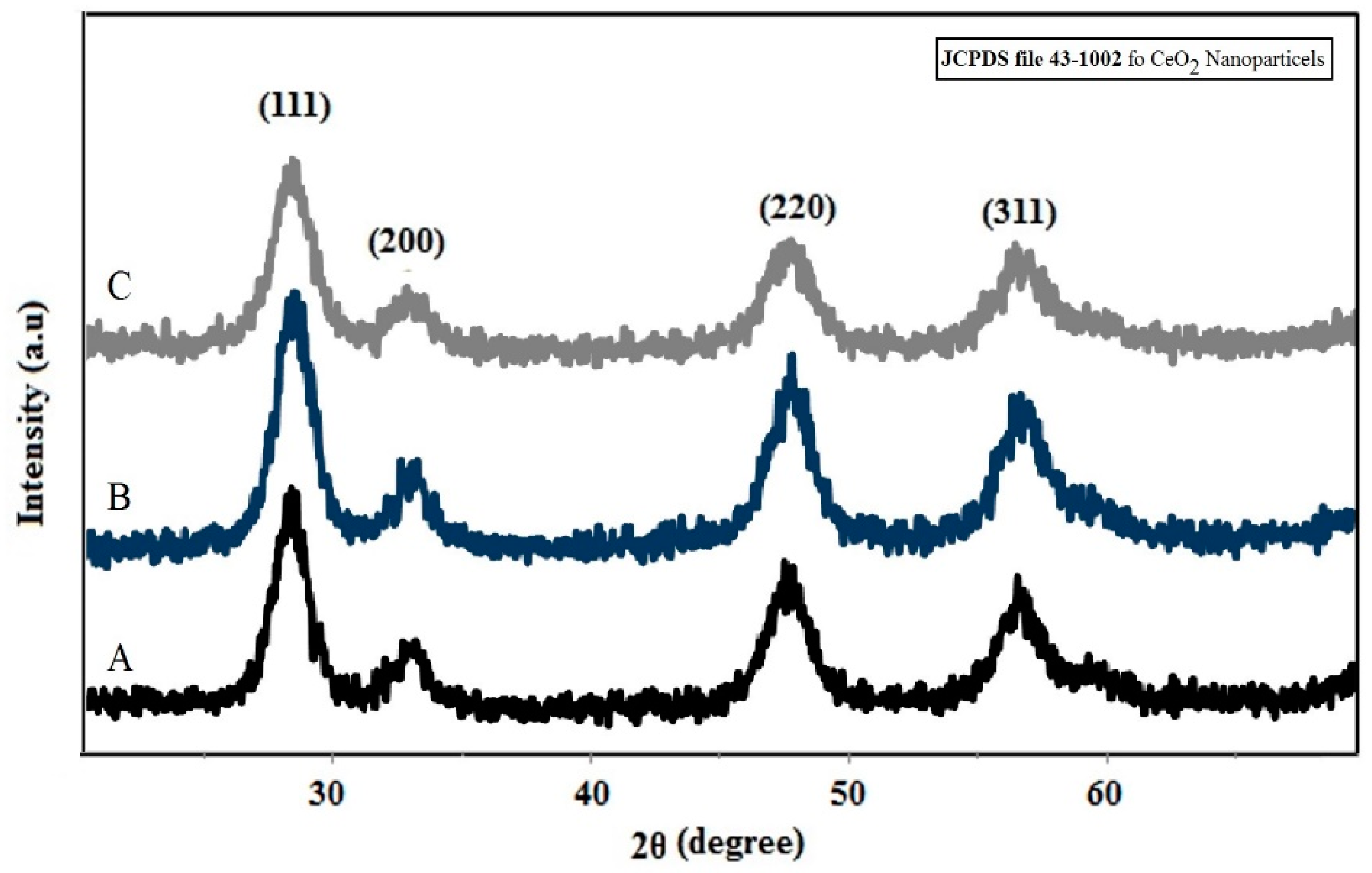
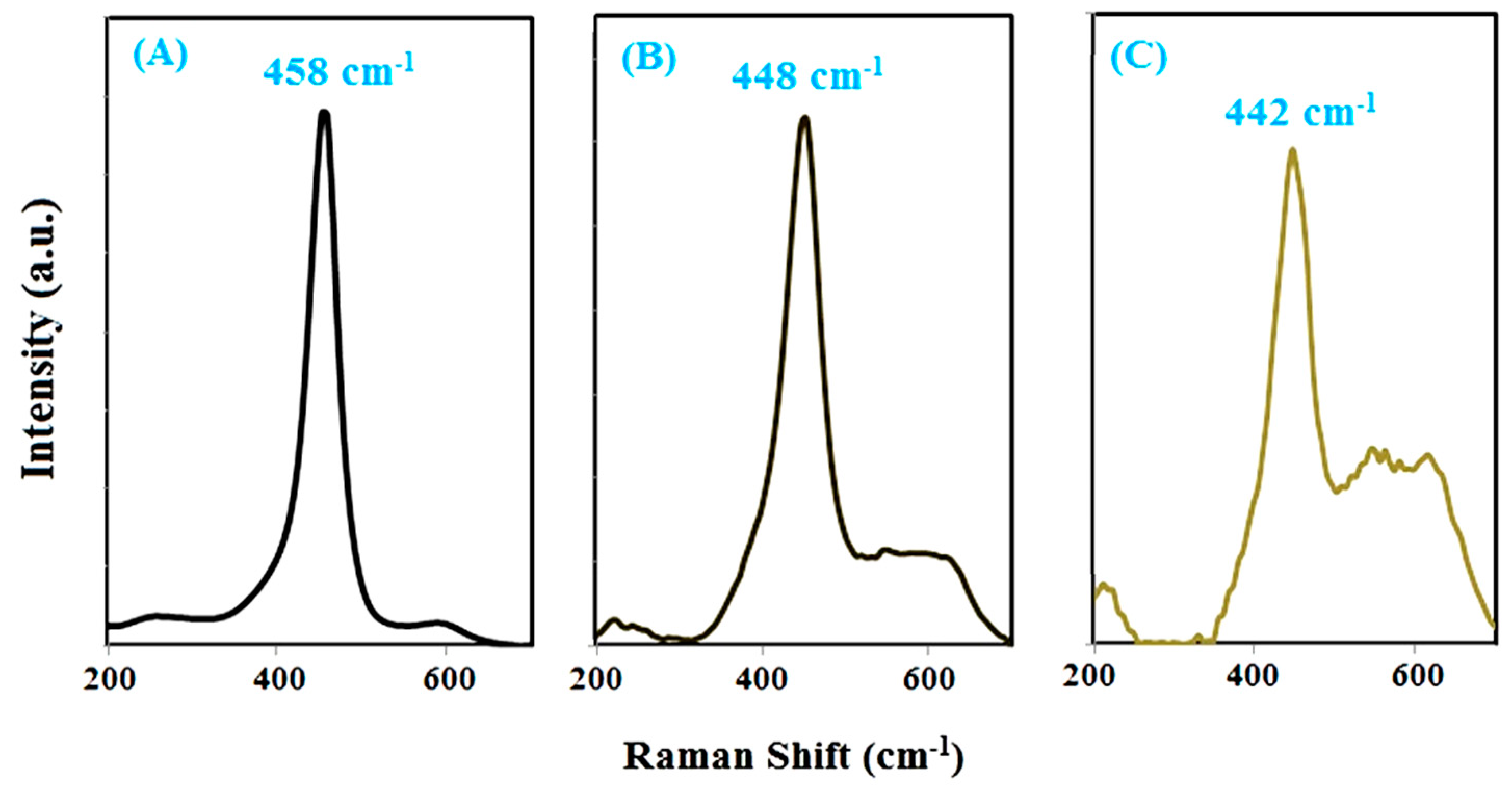
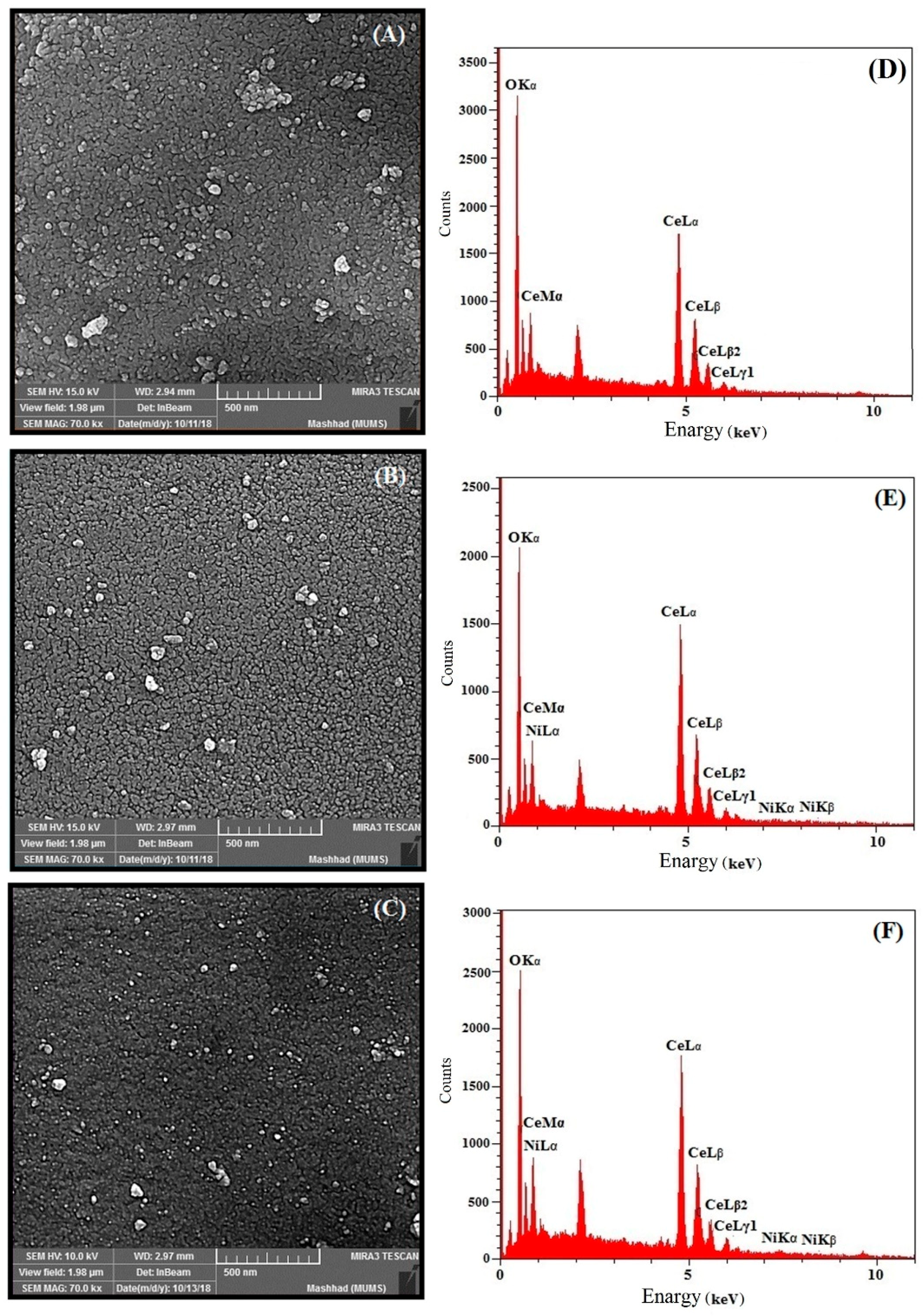
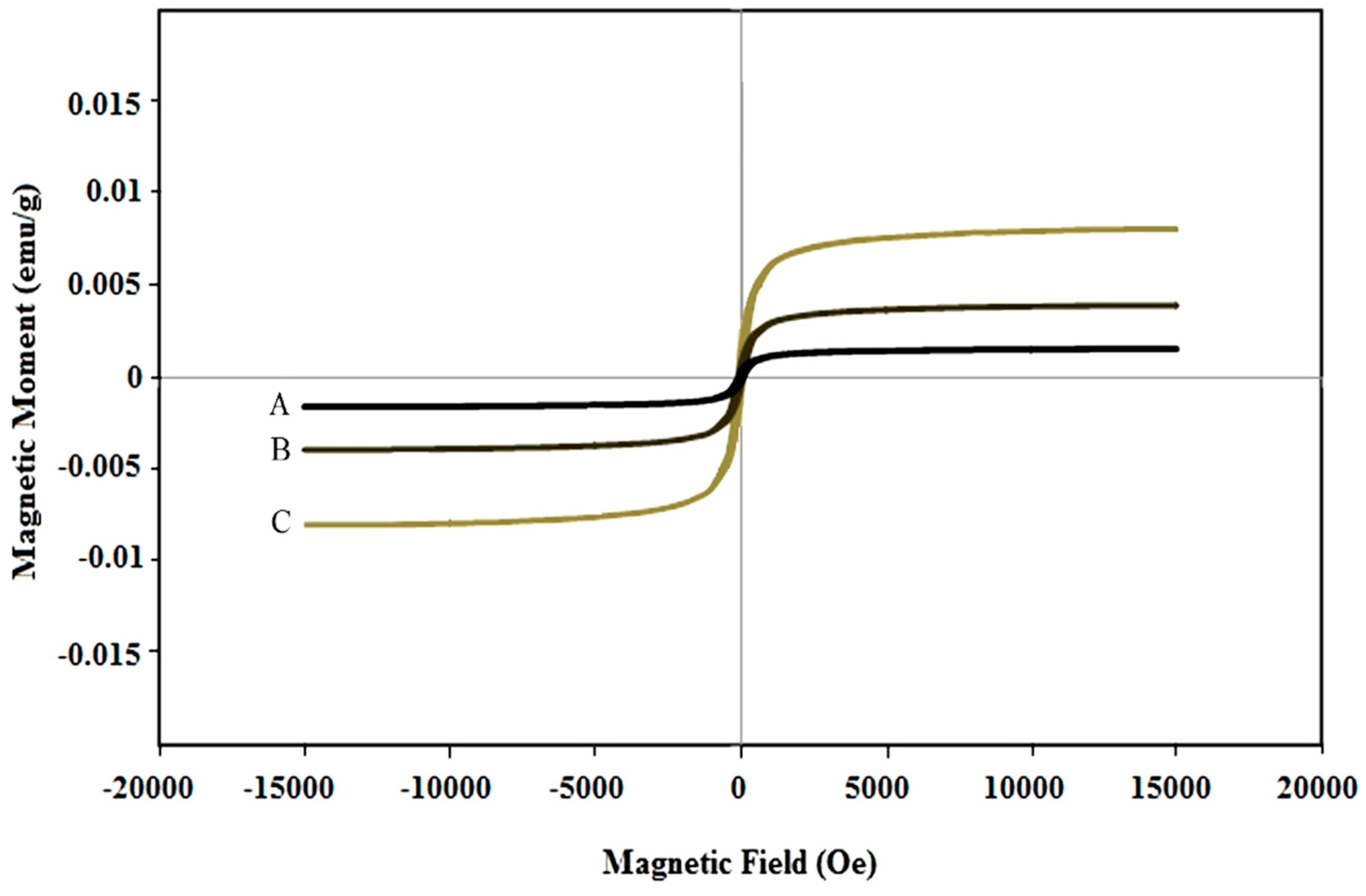
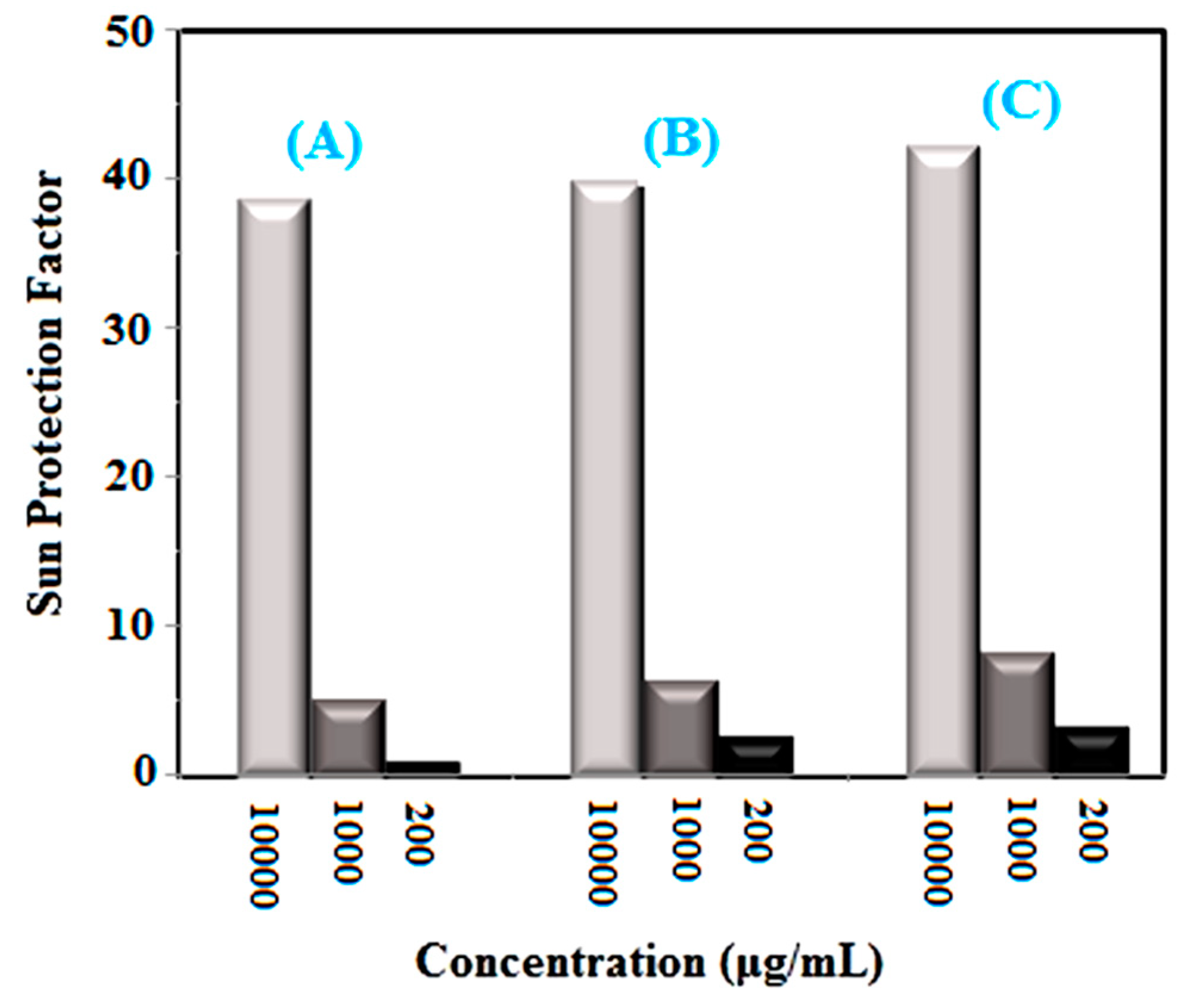
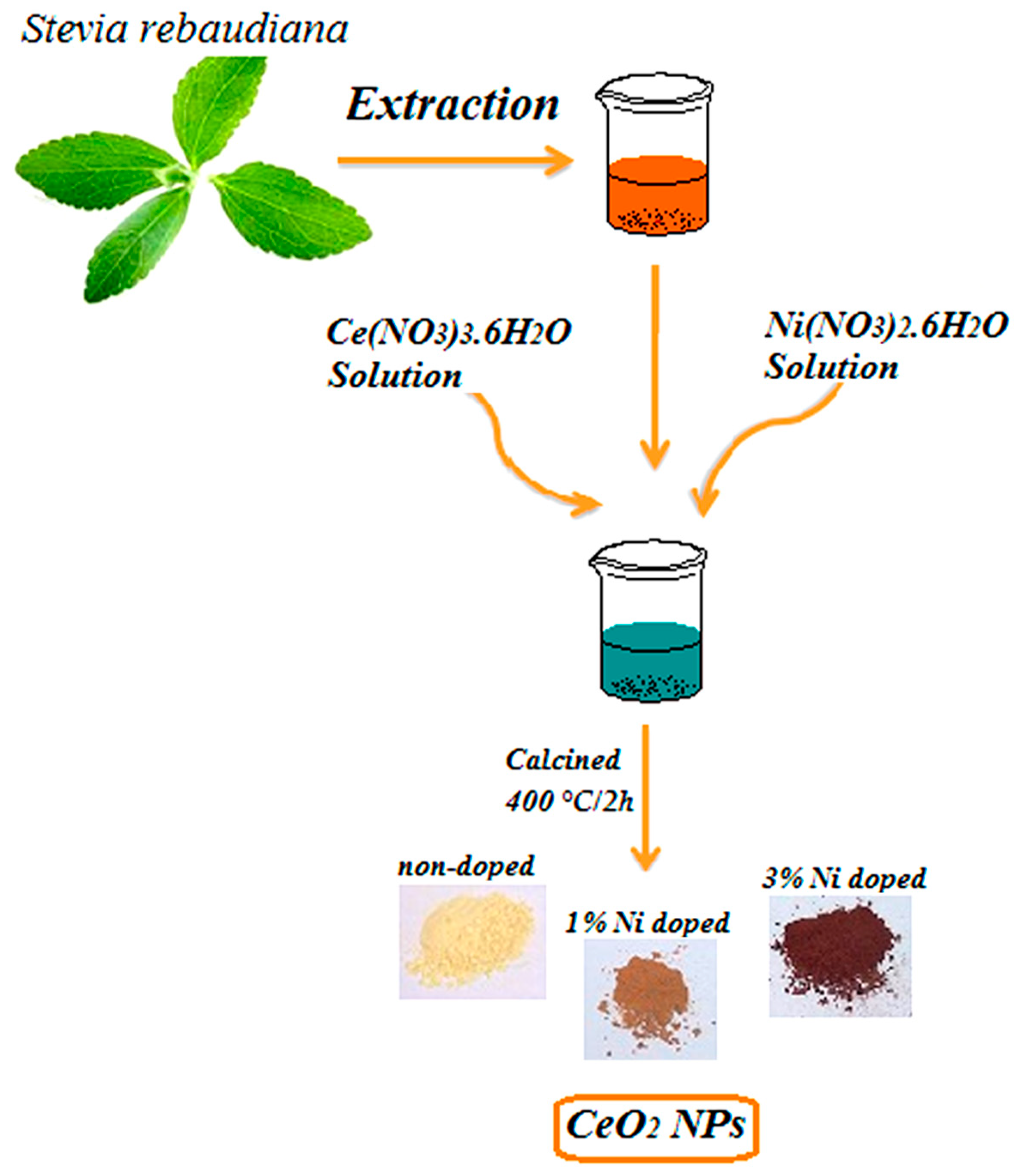
| Wavelength (nm) | 290 | 295 | 300 | 305 | 310 | 315 | 320 |
|---|---|---|---|---|---|---|---|
| EE × I (Normalized) | 0.0150 | 0.0817 | 0.2874 | 0.3278 | 0.1864 | 0.0837 | 0.0180 |
© 2019 by the authors. Licensee MDPI, Basel, Switzerland. This article is an open access article distributed under the terms and conditions of the Creative Commons Attribution (CC BY) license (http://creativecommons.org/licenses/by/4.0/).
Share and Cite
Khatami, M.; Sarani, M.; Mosazadeh, F.; Rajabalipour, M.; Izadi, A.; Abdollahpour-Alitappeh, M.; Lima Nobre, M.A.; Borhani, F. Nickel-Doped Cerium Oxide Nanoparticles: Green Synthesis Using Stevia and Protective Effect against Harmful Ultraviolet Rays. Molecules 2019, 24, 4424. https://doi.org/10.3390/molecules24244424
Khatami M, Sarani M, Mosazadeh F, Rajabalipour M, Izadi A, Abdollahpour-Alitappeh M, Lima Nobre MA, Borhani F. Nickel-Doped Cerium Oxide Nanoparticles: Green Synthesis Using Stevia and Protective Effect against Harmful Ultraviolet Rays. Molecules. 2019; 24(24):4424. https://doi.org/10.3390/molecules24244424
Chicago/Turabian StyleKhatami, Mehrdad, Mina Sarani, Faride Mosazadeh, Mohammadreza Rajabalipour, Alireza Izadi, Meghdad Abdollahpour-Alitappeh, Marcos Augusto Lima Nobre, and Fariba Borhani. 2019. "Nickel-Doped Cerium Oxide Nanoparticles: Green Synthesis Using Stevia and Protective Effect against Harmful Ultraviolet Rays" Molecules 24, no. 24: 4424. https://doi.org/10.3390/molecules24244424
APA StyleKhatami, M., Sarani, M., Mosazadeh, F., Rajabalipour, M., Izadi, A., Abdollahpour-Alitappeh, M., Lima Nobre, M. A., & Borhani, F. (2019). Nickel-Doped Cerium Oxide Nanoparticles: Green Synthesis Using Stevia and Protective Effect against Harmful Ultraviolet Rays. Molecules, 24(24), 4424. https://doi.org/10.3390/molecules24244424







